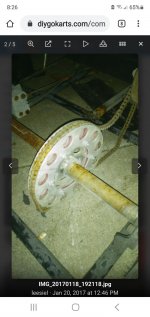well w/o suspension there's about the same amount of ground clearance
(minus axle flex difference that itself should be ideally zero anyways)
So the same size rock/debris in a perfectly inconvenient spot will it it just as before.
But I do agree that the closer it is to the wheel the more likely it is to hit it with the wheel first, thus clear it with the sprocket.
If you had issues with such happening those might get reduced.
But it's essentially as it is with the disc brake..
you hit some stump just barely on the edge and the wheel slips off again
you sit on the brake disc (or then sprocket) which is still unfortunate.
So I myself would not rule out adding a sprocket/chain guard (maybe additionally maybe instead)
from what I've seen you know how to weld..
so welding in a crash bar (basically an upside down barbie roll cage)
to protect the sprocket from such impacts is nothing I'd say you couldn't do in just a few minutes.
it might still hit the rock or stump of course but INSTEAD of the brake disc or sprocket
so while it might stop your ride temporarily it can't permanently, which is maybe what is most important on rough terrain

So.. since -as I said- I'd say you really should move the jackshaft you might as easily move the sprocket with it.
but the first time I get grounded because of such nasty unhappy circumstance
I'd add a lower sprocket/chain guard as well I think.
(funny.. I cannot seem to find an example pic currently.... I know we've seen several examples around.. not one shows up atm.. maybe I'm missing the correct search term *shrugs*)
'sid






